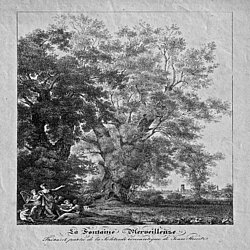Loading the page ...
Johann Baptist Stuntz
1753 Arlesheim – 1836 Munich
Next to nothing is known about the first 27 years of Johann Baptist Stuntz’s life. Around 1780/81 the artist lived in the Swiss city of Biel, where he collaborated with the painter and print maker, Johann Joseph Hartmann (1752–1830) and produced vedute in gouache of the local countryside. As the French Revolution broke out and gained ground in Basel, Stuntz entered the military, serving as an engineer officer in Alsace and as a civil commissioner in the department of the Jura. In 1795 Stuntz settled with his family in Strasbourg, where he opened a drawing school and was active as an art dealer. However, in 1808 the family moved to Munich for economic reasons as well as to protect Joseph Hartmann’s eldest son, who proved to be a remarkably talented musician and composer, from compulsory military service in Napoleon’s army. In Munich Stuntz became acquainted with the technique of lithography, which was invented in the city by Alois Senefelder in 1798. Around the turn of 1809/10 Stuntz founded a lithograph printing house together with the chief librarian of the court library, Johann Christoph Freiherr von Aretin (1773–1824), the director of the royal art collections, Johann Christian von Mannlich (1741– 1822), and the draughtsmen, Johann Nepomuk Strixner (1782– 1855) and Ferdinand Piloty (1786–1844). On 1 May 1809 the enterprise began publishing the “Œuvres Lithographiques”, a collection of 432 prints reproducing the most important drawings and paintings from the royal Bavarian collection. In the following years Stuntz’s company published numerous incunabula of lithography and played a key role in the spread of this technique in Germany.
On Offer
